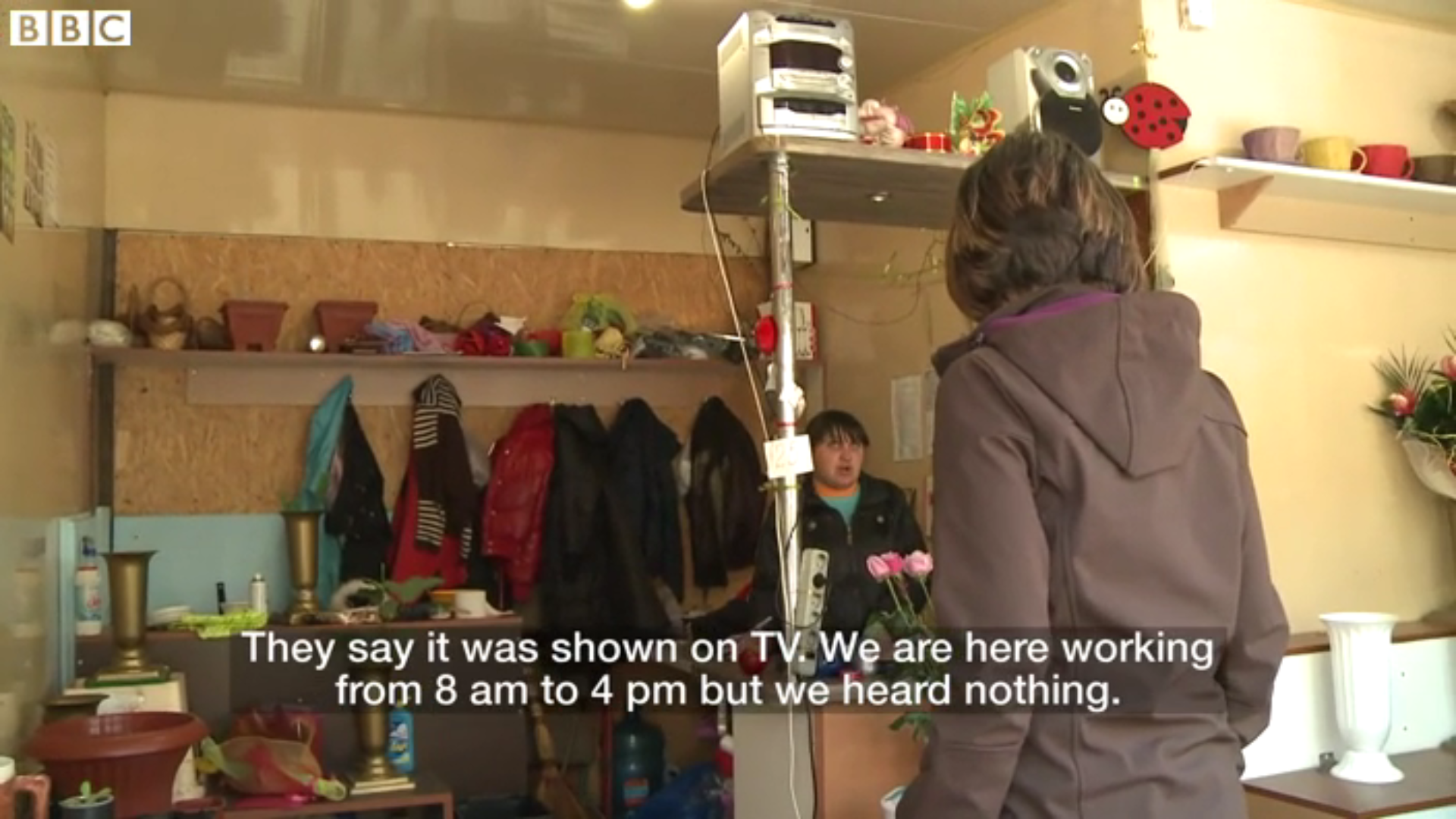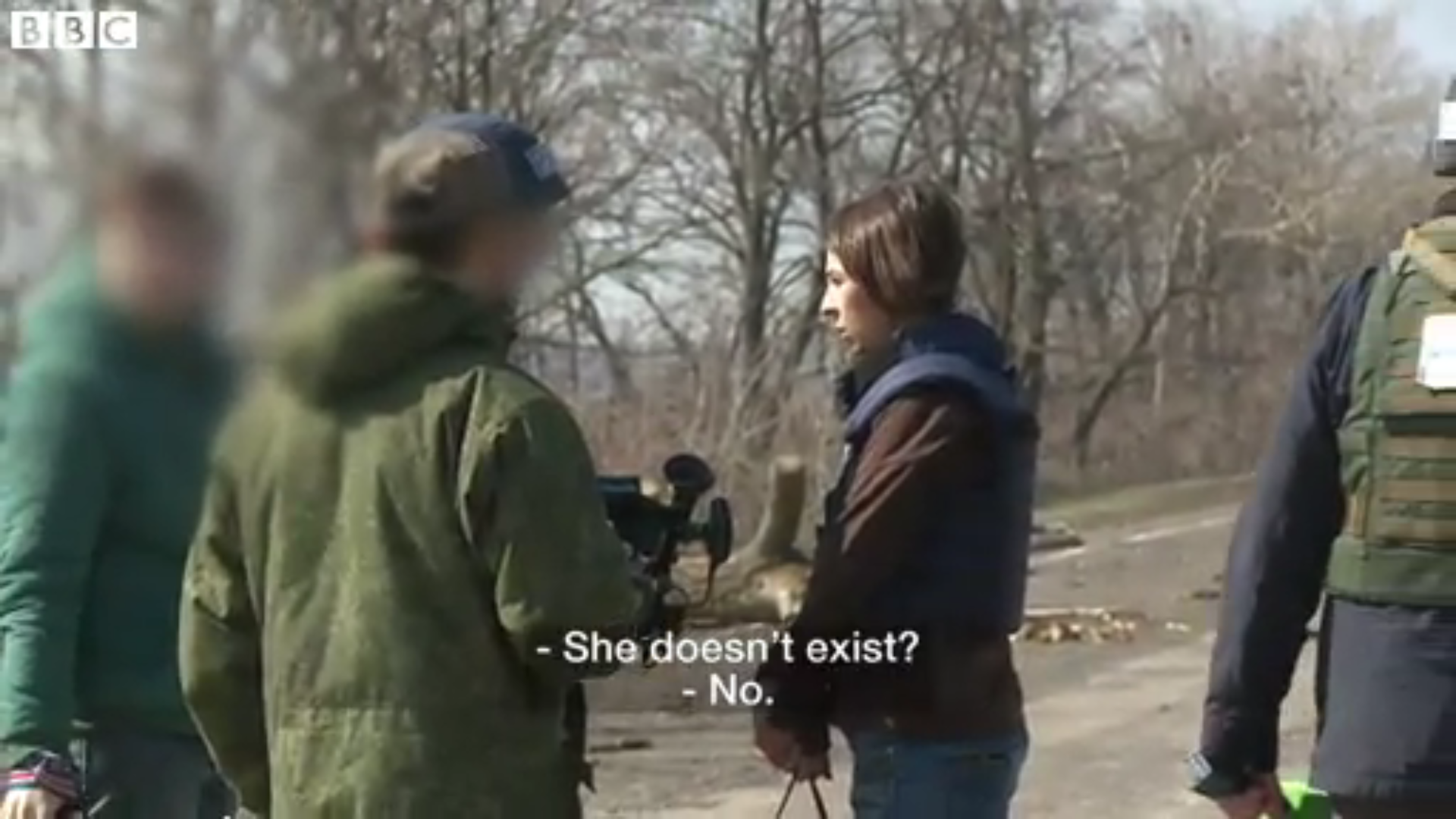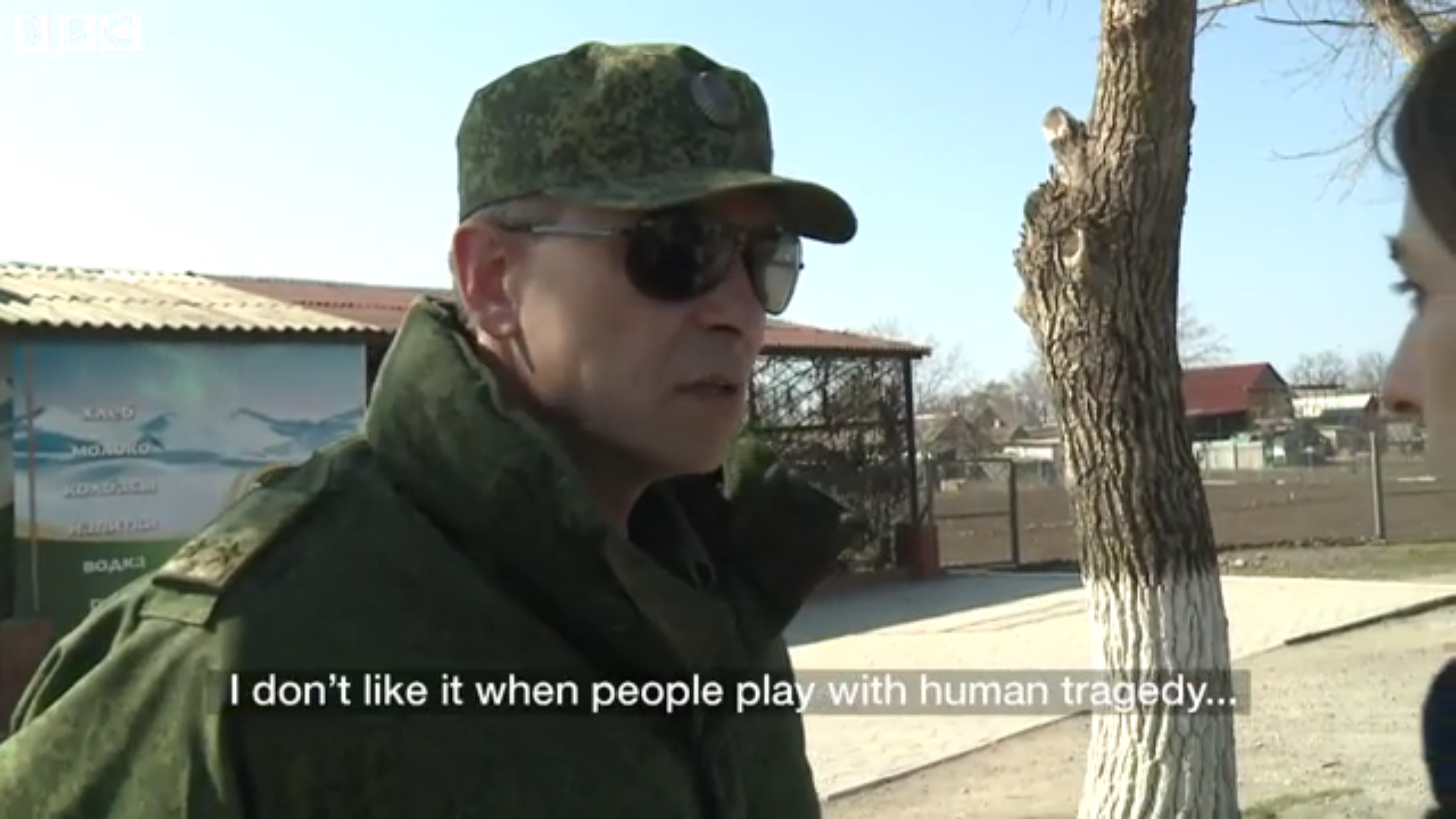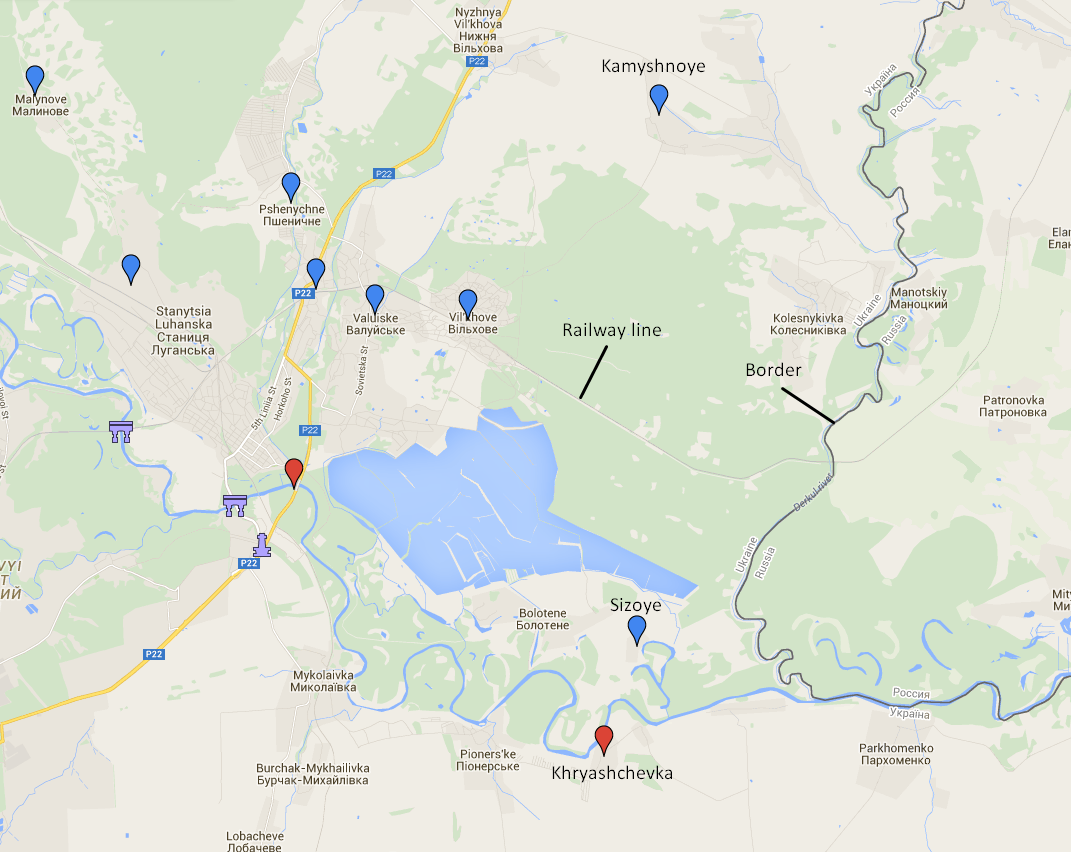Yesterday’s live coverage of the Ukraine conflict can be found here. An archive of our liveblogs can be found here. For an overview and analysis of this developing story see our latest podcast.
Please help The Interpreter to continue providing this valuable information service by making a donation towards our costs.
For links to individual updates click on the timestamps.
For the latest summary of evidence surrounding the shooting down of flight MH17 see our separate article: Evidence Review: Who Shot Down MH17?
Yesterday, we reported that Anna Shaydurova, a Crimean journalist, had been called in for questioning by the FSB in Russian-occupied Simferopol. She suspected that the demand was connected to an ongoing investigation by the FSB into published work at the Centre for Investigative Journalism (CJR), at which Shaydurova used to work.
Today, Halya Coynash of the Kharkiv Human Rights Group reports that Shaydurova was interrogated for around three hours today. The journalist’s lawyer was present during the FSB interrogation, but she was made to sign a non-disclosure agreement. She did, however, confirm the subject of the questions were the CJR’s work and staff.
Another CJR journalist, Anna Andievska, who is under investigation by the FSB but now lives in Kiev, said that she believes the investigation to be centred around a CJR article published in December last year on the Ukrainian ‘Crimea’ volunteer battalion.
Coynash highlights passages that may have invoked the wrath of the FSB, which is investigating the CJR on the basis of article 280.1 of the Russian Criminal Code – “public appeals for a forcible change of the constitutional system of the Russian Federation.”
One Vinnytsa EuroMaidan supporter Taisiya Haida explains why she and others are providing assistance:
“Vinnytsa is very concerned about the fate of Crimea, we very much want it to remain in Ukraine. Therefore our local AutoMaidan [the car initiative linked with EuroMaidan] took on the task of helping displaced people and ATO fighters. We collect everything they could need and send it ourselves. Because they are our heroes. Our fate and the fate of our country depends on them. Many Crimeans hope that Crimea will return. And the Krym Battalion gives them hope of that”.
The author adds that Haida reports that the number of people wanting to support the Krym Battalion is constantly growing.
“Of course the Krym Battalion, unlike other volunteer formations, has its own particular aim – not only to win the war in Donbas, but also to return Crimea to under the control of Ukraine.”
Andriyevska ends by explaining that any ceasefire has been breached, and that the needs of Ukrainian fighters are unlikely to decrease in the near future. “Crimeans, for example, could more actively support the Krym Battalion. Considering that its soldiers say that their main aim is to return the occupied peninsula to Ukrainian control. It should be understood that it is this that businesspeople, many of whom also moved from Crimea after its Russian annexation, want. So is it not time to begin returning it?”
The reader can decide whether this is a criminal offence deserving a five-year prison sentence.
— Pierre Vaux
The pro-separatist Donetsk News Agency (DAN) reports that the ‘ministry of defence’ of the self-proclaimed Donetsk People’s Republic (DNR), has denied Ukrainian claims that it’s Russian-backed forces are shelling Ukrainian positions with heavy weaponry, in violation of the Minsk agreement.
A representative of the ‘ministry’ told DAN that the Ukrainian reports were fabricated with the aim of discrediting the separatists and to provide a justification for their own shelling of DNR positions.
The spokesman also claimed that the OSCE Special Monitoring Mission to Ukraine was inspecting DNR positions on a daily basis, and that “no violations whatsoever have been identified.”
This contradicts statements made by the OSCE itself, which regularly records cases where SMM observers have been refused access to front-line positions by both sides in the conflict.
Furthermore, the SMM regularly records exchanges of artillery fire along the front. In their most recent report, dated April 6, the SMM reported mortar exchanges in Peski, north-west of Donetsk. An unexploded 152 mm artillery shell was found on the outskirts of Avdeyevka which appeared, according to SMM estimates, to have been fired from the south (i.e. separatist-held territory).
— Pierre Vaux
The OSCE says that Russian-backed separatists fired warning shots at one of their convoys (while unmarked cars were able to quickly speed through the same checkpoint).
Here is the full spot report from the OSCE SMM (Special Monitoring Mission):
On 7 April, while traveling east on road E58 toward a “Donetsk People’s Republic” (“DPR”) checkpoint in Shyrokyne (20km east of Mariupol, 99km south of Donetsk), the SMM was halted by an improvised “DPR” roadblock, located on the northern edge of Shyrokyne (“DPR”-controlled). As the SMM approached the checkpoint on foot, a patrol member immediately encountered warning shots of heavy machine gun fire to his right, and semi-automatic rifle fire to his left.
The SMM proceeded to make contact with a “DPR” member, emerging from a nearby trench, to negotiate passage through the roadblock. After some discussion, and a search of SMM vehicles by “DPR” members, the SMM patrol was allowed to proceed. Prior to departing the scene, the SMM saw two cars enter Shyrokyne at high speed and four cars depart at high speed. The cars, with “DPR” members on board, had no number plates. “DPR” members at the scene told the SMM that Ukrainian Armed Forces personnel had been targeting the stretch of the E58 highway directly east of Shyrokyne in the past two weeks. As the SMM left the scene, it travelled east on E58, where it observed the wreckage of several vehicles which had been recently destroyed by machine gun and anti-tank missile fire (see SMM Daily Report 30 March, 6 April). The SMM continued travelling east towards Novoazovsk on E58, at the border between Ukraine and the Russian Federation.
— James Miller
The BBC’s Natalia Antelava and Abujalil Abdurasulov have been investigating a report, disseminated by Russian state-owned media, that a 10-year-old girl had been killed by Ukrainian shelling in Donetsk.
According to spokesmen for the self-proclaimed Donetsk People’s Republic (DNR), the girl was killed in the Petrovsky district in the south-west of the separatist-held city.
However, when the BBC visited the area they could not find residents who recalled hearing any shelling that day.

A visit to the morgue was similarly fruitless, with the reticent director of the facility telling the reporters that the girl’s body had not been brought in.
During a separatist-organised press trip, one reporter for a Russian state-controlled television channel told Antelava that the incident had been completely fabricated.

The reporter tells Antelava that “we had to broadcast it.”
We cannot (as yet) tell if this is the exact reported incident, but on March 24, NTV, the state-owned broadcaster shown by the BBC to be carrying the story, ran a report on a 10-year-old girl being killed in the Petrovsky district.
The report cited an announcement by Eduard Basurin, spokesman for the DNR ‘ministry of defence,’ that the girl had been killed by Ukrainian shelling.
Basurin was interviewed by Antelava. Once again he repeated the claims, while refusing to give any further details on the name of the girl or the circumstances of the incident out of supposed respect for the victim’s family.

— Pierre Vaux
The Ukrainian National Security and Defence Council (NSDC) has announced that two Ukrainian soldiers have been killed and four wounded over the last 24 hours.
The ATO press centre claimed that there had been 23 attacks on Ukrainian position since 18:00 yesterday.
The press centre released a statement this morning claiming that 82 mm mortars had been used 4 times and 122 mm artillery 3 times in attacks on Ukrainian positions.
The NSDC later reported that there had also been 5 attacks with 120 mm mortars.
The majority of attacks were conducted in the Donetsk region, near Peski, Opytnoye, Avdeyevka (all north of Donetsk) and Mayorsk (north-east of Gorlovka).
At around 18:00, Russian-backed fighters reportedly opened fire three times with tanks.
In the Lugansk region, there was an attack on a Ukrainian checkpoint near the village of Novotoshkovka at 21:45.
Novosti Donbassa reports that the State Border Guard Service of Ukraine (SBGS) has announced that their servicemen came across and engaged a group of “Russian mercenaries” yesterday evening.
According to the SBGS, the Russian commando group was moving along the railway lines south-east of Stanitsa Luganskaya, near the Russian border, and was encountered just before midnight by border guards.
The Russians were repelled by small arms grenade launcher fire.
The SBGS gives a vague location, stating that the Russians were moving from the direction of Kryashchevka, and were found “close to the village of Kamyshnoye.”
However neither of these settlements are actually on the railway line:

Furthermore, there is no viable river crossing in this area from separatist-held territory south of the Seversky Donets.
The incident recalls another encounter reported by the governor of the Lugansk region on April 1, when Ukrainian forces reportedly intercepted a Russian commando unit near Sizoye (indicated on map above).
At the time, we concluded that it was most likely that any scouting party would have had to enter from the Russian Federation, rather than separatist-held Ukraine. At the time, the governor’s office was careful to describe the enemy troops as having crossed into “territory controlled by Ukraine.”
But given the location of the border in these two incidents, and an earlier raid near Melovo, north of the conflict zone, which was described by the governor as being a cross-border attack, it seems there is a pattern of such incursions. Perhaps Russia is attempting to probe Ukraine’s defences behind the lines.
— Pierre Vaux